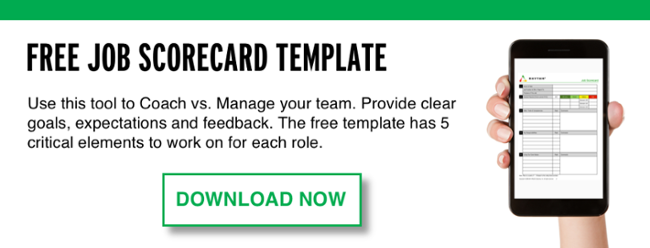Talent shortages are more than a buzzword; they're a business reality that CEOs can't afford to ignore. The lack of skilled professionals can stifle growth, increase costs, and hamper innovation. This post outlines actionable strategies for CEOs and business leaders to tackle talent shortages head-on.
Understanding the Talent Gap in Your Organization
The Current Landscape
The talent gap isn't just a shortfall in numbers—it's a skill gap. Businesses need specialized skills that are often hard to find. The first step in tackling this issue is understanding the specific skills your organization lacks.
CEOs must understand the changing landscape of talent demands and adapt their strategies accordingly. To do this, they should research industry trends and their organization's needs. CEOs can then focus on developing strategies to bridge the skills gap in their workforce.
One way to bridge the talent gap is to invest in upskilling existing staff or onboarding new employees with specialized skills. Another is to find talented people on your existing team and train them with the new skills needed in your company. For example, if you aren't sure what to do about AI, you can find someone on your team to run a pilot program. You can start with a specialty program like our SMART AI goal setting.
Data-Driven Insights
Utilize analytics tools to assess your current workforce's skills and identify the gaps. This data-driven approach ensures you follow industry trends and address your unique needs.
Analytics tools can measure employees' longevity, provide insights into productivity, compare trends across departments, and analyze career paths. This data can help you identify areas where your organization may need to invest more resources in training and development.
Analytics can also help you identify areas where you may have a skill shortage. By understanding your current employees' skills, you can better assess which new hires are needed to fill those gaps. This helps ensure that your talent pool is diverse and well-rounded.
Regular Assessments
When tackling talent shortages, one of the best strategies a CEO can employ is to implement regular skills assessments. A skills assessment helps to identify areas where an organization may be lacking in terms of its workforce and can be used as a metric to measure the effectiveness of any training programs that have been implemented.
Assessments should be conducted to identify existing gaps in skills and knowledge, as well as to measure the effectiveness of any training programs that have been implemented. Regular assessments will also allow you to understand better your organization's strengths and weaknesses regarding the workforce and the potential talent gap. Once you have identified any gaps in your workforce, you should create a plan to address them.
Strategies for Attracting Talent
Build a Strong Employer Brand
Your employer brand is your reputation as a place to work. A strong brand attracts quality candidates. Use your company website, social media, and even offline events to showcase your culture and values.
Consider Non-traditional Sources
Look beyond the usual places to find talent. Consider websites that hire passive job seekers, veterans, and recent graduates. Leverage recruiting agencies to help you identify potential candidates.
Engage with Your Talent Pool
CEOs must be proactive in tackling talent shortages that their businesses are facing. One key strategy is to develop relationships with potential employees, even if they're not in the market for a job right now. This can be done by leveraging social media platforms like LinkedIn, Twitter, or Facebook. By engaging with potential hires on these platforms, CEOs can establish relationships that will make it easier to bring in the best talent when they are ready to make a move. Additionally, CEOs should use data-driven insights and regular assessments to identify their current skills gaps and create a plan to address them. Lastly, they should build a strong employer brand to attract quality candidates.
Leverage Recruitment Marketing
Traditional recruitment methods are often insufficient. Use targeted digital marketing strategies to attract talent. This includes SEO-optimized job postings, leveraging professional networks they are already engaged in, or advertising on specialty job boards.
Recruiting and retaining top talent is critical for a company's success, but staffing can be daunting in today's competitive job market. The war for talent is fierce, and companies need to look beyond traditional recruitment methods to tackle the talent shortage. One way to do this is to leverage recruitment marketing strategies to target top talent with digital marketing efforts. Additionally, CEOs should create a strong employer brand, consider non-traditional sources of talent, and engage with their potential talent pool to attract the best candidates. With these strategies in place, businesses can ensure they are well-positioned to tackle any talent shortage they may face.
Skill Development Programs
Offer in-house training or partner with educational institutions to provide skill development programs. This attracts candidates who are eager to grow and learn. Skill development programs are an excellent way for employers to tackle talent shortages. They provide an opportunity to train and develop staff while attracting new candidates eager to grow and learn from the company's resources. These programs can be offered in-house or through partnerships with educational institutions. Inhouse training allows employers to control the program's content directly, ensuring that it meets or exceeds your high standards and helps you achieve your 3 year business plan.

Addressing Pay and Work Conditions
Competitive Salaries
Competitive salaries can be a great way to tackle talent shortages. Offering competitive pay with industry standards will attract more qualified candidates and make your company attractive to potential employees. A competitive salary package should include base pay, bonuses, and incentives based on performance. When offering a salary package, employers should consider the job responsibilities, job seeker's experience, and position location.
Flexibility Matters
Work-life balance is increasingly important. Offering flexible work hours or remote work options can make your organization more attractive.
In today's competitive job market, the right talent is hard to come by. CEOs need to think outside of the box to tackle talent shortages. One way of doing this is by offering flexibility in the workplace. Flexibility matters for many reasons, but perhaps the most important one is that it can make your organization more attractive to potential employees. Flexibility might include working from home, staggered hours to avoid traffic, or other specific adaptations to the typical work schedule.
Comprehensive Benefits
Beyond salary, benefits like healthcare, retirement plans, and paid time off can tip the scales in your favor when candidates decide between job offers.
Comprehensive benefits can help attract and retain talented workers in a competitive job market. For example, flexible work arrangements such as remote or part-time options, childcare subsidies, and sabbaticals can cultivate employee loyalty. Additionally, providing tuition reimbursement or other professional development opportunities shows that you value your employees' growth. Providing comprehensive benefits helps build a positive workplace culture, which is essential for a successful business.
Executive Summary
Tackling talent shortages requires a multi-pronged approach. It's not just the responsibility of the HR department but needs to be a strategic focus for CEOs and business leaders. By understanding the talent gap, attracting quality candidates, offering competitive pay and benefits, and preparing your workforce for the future, you can turn the challenge of talent shortages into an opportunity for growth.
Want To Attract More Amazing Talent To Your Organization? Check out these additional resources:
How to Keep Your Top Talent: 12 Actionable Tips for Engaging Talent
Employee Engagement Mistakes to Avoid
A Better Way to Attract, Retain & Reward Top Talent
Recruiting A Players: How to Find and Develop Topgrading "A Players"




